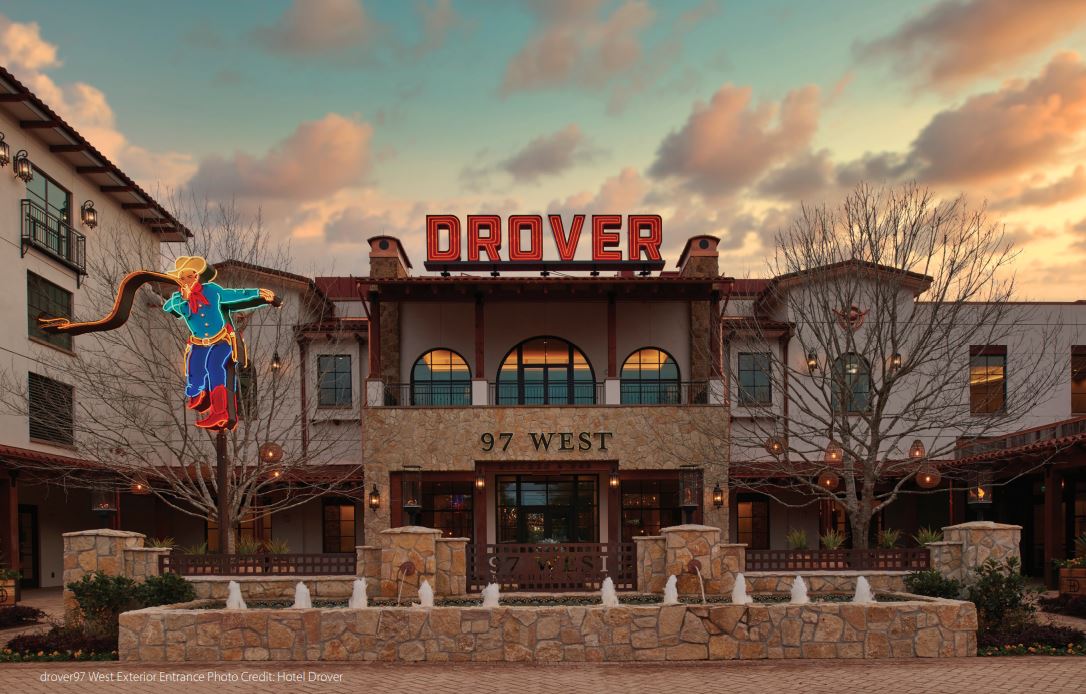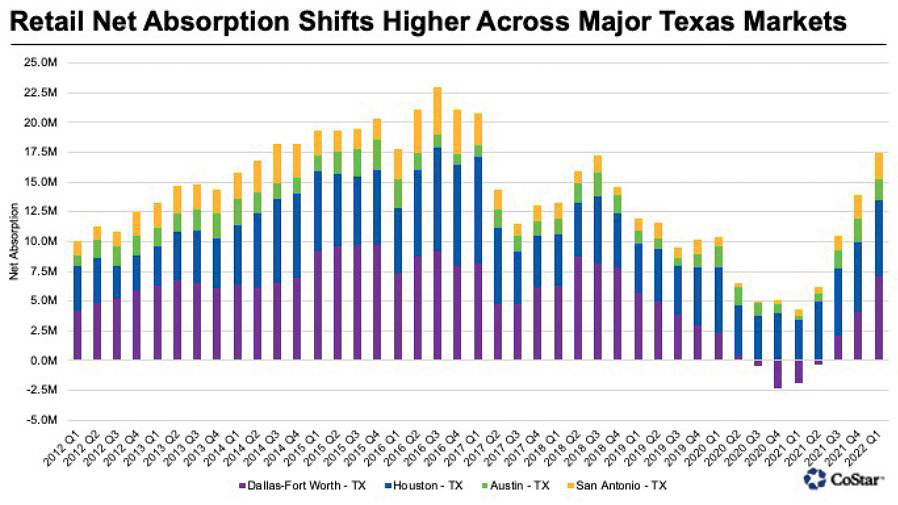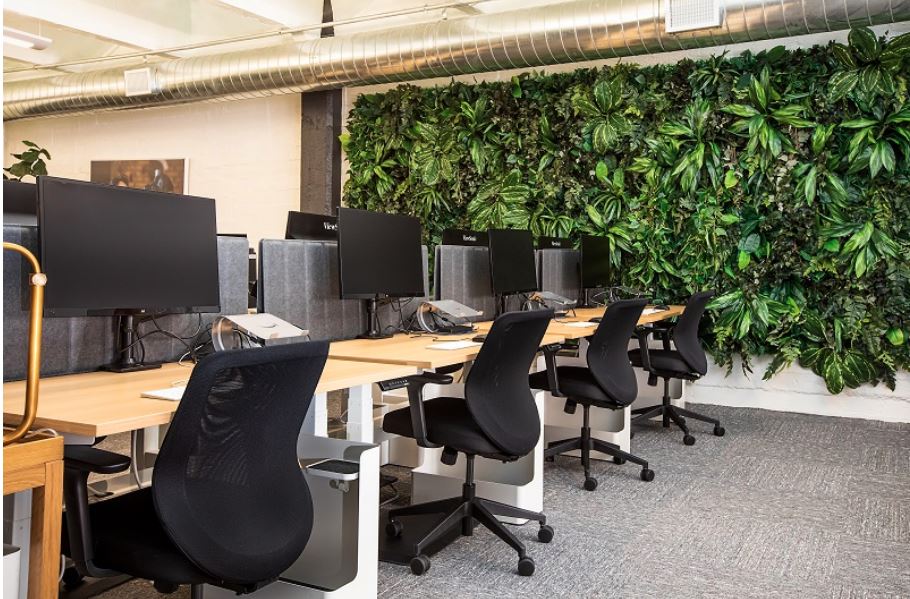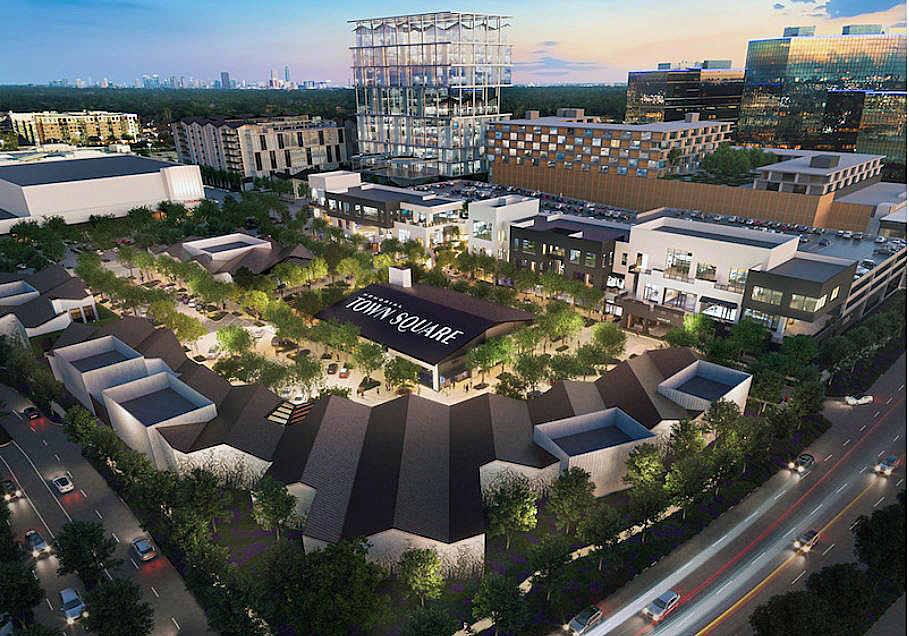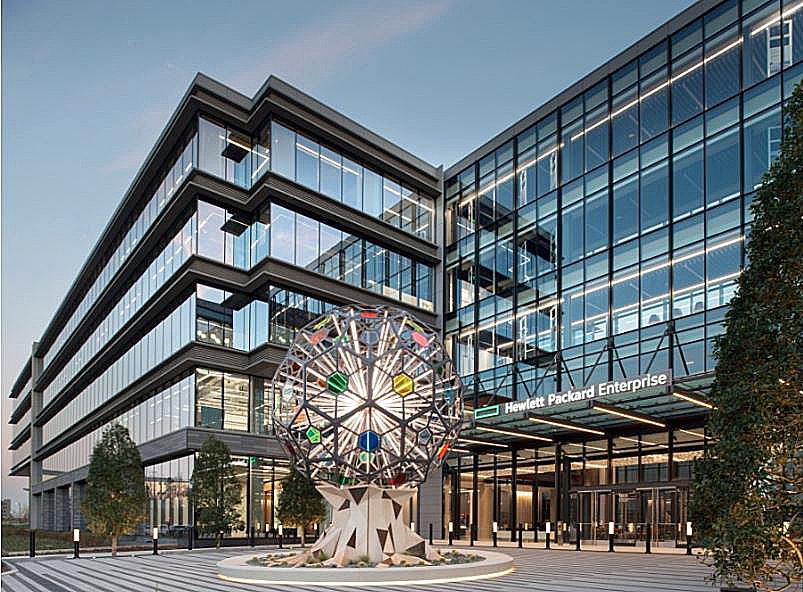How healthy are offices across the United States? And are employees more likely to return to the office – at least on a part-time basis – if their employers take the steps necessary to boost indoor air quality, improve natural light and surround their work areas with green spaces?
These are questions tackled by Joanna Frank, founding president and chief executive of the Center for Active Design in New York City. The center is the operator of Fitwel, a certification system originally developed by the U.S. Center for Disease Control and Prevention that measures how healthy offices are.
The health of indoor working spaces is a hot topic today, thanks in part to the COVID-19 pandemic and the desire of employers to bring their workers back to the office after so many have worked remotely for more than two years.
Consider these facts from the Center for Active Design:
Indoor air pollutants are generally two to five times greater than outdoor levels of air pollution.
Poor light quality and uninspiring views in offices cause employees to miss more time from work with illnesses.
Employees greatly benefit from natural, green surroundings, which are often a small investment for companies and building owners to make.
Frank said that employers and building owners should invest in ways to improve the health of indoor office spaces, especially if they want to bring their workers back to their conference rooms, cubicles and desks.
To do this, though, owners and employers need to understand what makes a building or office space healthy. Frank said that there are three keys.
No one-size-fits-all solution
First, building owners must address of the needs of the occupants of a building.
“This lets you know that this is not a one-size-fits-all solution,” Frank said. “You have to respond to the needs of the users of a space.”
Secondly, it’s important for employers and owners to enact strategies that have already been proven to produce cleaner air, happier employees and a more productive workplace. Employers should search out the evidence to prove that the investments in healthy spaces they are making will provide results.
And maybe most importantly, employers and building owners must measure the impact of their healthy workspace initiatives. They must also share these results with their tenants and employees.
This means that building owners must be able to show their tenants that healthy initiatives are helping them attract and retain employees and that these workers are more productive now that healthy initiatives are in place. And employers must show their workers that their indoor air quality ratings are high, more outdoor light is bathing their offices’ interiors and that employees are calling in sick less often.
The key here? Companies are not likely to pay more to lease office space just because it is healthier. And building owners are not likely to invest in green space, air-purification spaces and indoor gathering spaces just to be nice. Owners and tenants need to see that these healthier additions will pay off, whether this means giving owners additional tools to attract more tenants and charge higher rents or giving tenants the amenities they need to convince employees to return to the office or attract and retain the best talent.
“The more research-based strategies you have promoting health, the higher the degree of tenant satisfaction,” Frank said. “The more things you do to promote health, the more likely you are to retain workers. You must be able to demonstrate those business outcomes if you are a building owner. Real estate needs that proof. Real estate demands that you can show that return on investment.”
Fortunately, Frank said, this isn’t difficult to prove. As she says, there has always been a direct correlation between the health of a business’ workers and their productivity.
What has changed since COVID, though, is demand: Workers are now demanding healthier office environments.
“People are now demanding that their companies be able to demonstrate how they are promoting and protecting their health,” Frank said. “Before COVID, we weren’t seeing individuals asking for a healthier work environment. That has now changed. That is a game-changer. We knew how to create healthy office spaces before COVID. We had a massive body of evidence showing how to do this. The difference now is that the workers are demanding this, which is persuading companies to explore their options.”
And employees want proof that companies are taking steps to promote their health, Frank said. It’s no longer enough for companies to say that they are taking steps to boost indoor air quality, for instance. Today, they must show their workers actual statistics and test results proving that their claims are true.
“It has changed from health being a nice-to-have before COVID to being a must-have today,” Frank said. “It used to be that building owners would think about healthy building measures after they took care of everything else. But now, owners can lose their Class-A tenants to other buildings that are demonstrating how they are promoting health and wellness.”
Creating the healthy workplace
What are some of the steps, then, that building owners can take to boost the health of their tenants?
Frank said that companies and their workers today are focused heavily on indoor air quality. It’s important, then, for building owners to improve the air-purification systems and air flow in their buildings. They need to bring more outside air into their workspaces.
This will boost not just the physical health, but also the mental health of building occupants, Frank said.
High-quality natural light is important, too, for the physical and mental health of occupants, Frank said. And offices need outdoor light to flood their spaces, not artificial. Frank said that studies have shown that natural light is directly related to employee productivity.
Another key is that building occupants have access to nature and green spaces. This could be a small rooftop garden or even the addition of indoor plants.
“You can do this in any building,” Frank said. “It doesn’t have to be new construction. You can bring nature into a space very effectively by using green walls, plantings, whatever you have. Bringing nature into the office is very important for employees’ mental health and feelings of well-being.”
What also matters is building trust, Frank said. This means that building owners and employers must show workers real numbers showing how effective their healthy measures are. And they must share these numbers even if they show that a particular measure isn’t having as much of an impact as they had hoped.
And if the numbers show bad news? Employers and building owners must share their plans for replacing or improving whatever measures aren’t working, Frank said.
Consider indoor air quality. Building owners and employers can’t just say that they are using a certain level of filtration. They must explain why they are using it, Frank said, and what their air-quality goals are.
“People have become very educated about indoor air quality,” Frank said. “You need to provide details. You need to tell tenants about how much outdoor air you are bringing into the building. You need to be measuring indoor air quality in a consistent way. And what will you do if you are not achieving the results you want? That is a tough one for building owners. There is risk involved. You need to have policies in place explaining how you will respond if your system provides less-than-optimal air quality.”
How healthy are offices across the United States? And are employees more likely to return to the office – at least on a part-time basis – if their employers take the steps necessary to boost indoor air quality, improve natural light and surround their work areas with green spaces?
These are questions tackled by Joanna Frank, founding president and chief executive of the Center for Active Design in New York City. The center is the operator of Fitwel, a certification system originally developed by the U.S. Center for Disease Control and Prevention that measures how healthy offices are.
The health of indoor working spaces is a hot topic today, thanks in part to the COVID-19 pandemic and the desire of employers to bring their workers back to the office after so many have worked remotely for more than two years.
Indoor air pollutants are generally two to five times greater than outdoor levels of air pollution.
Poor light quality and uninspiring views in offices cause employees to miss more time from work with illnesses. Click to read more at www.rednews.com.




